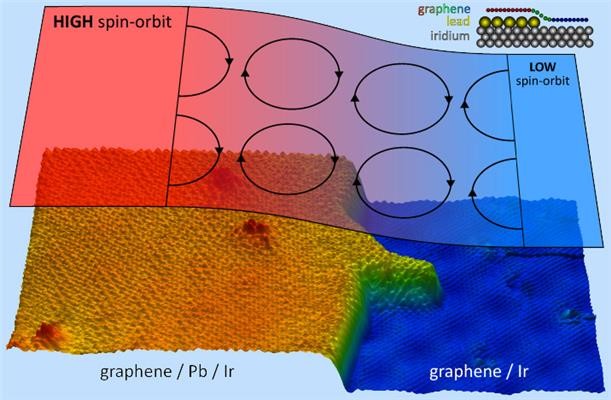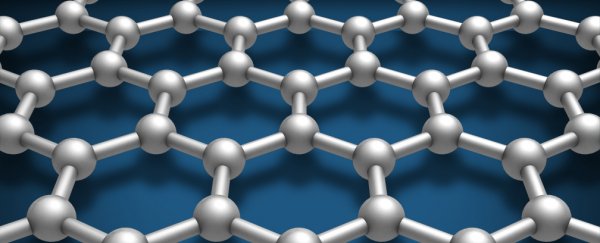Graphene has a lot going for it - as you've most likely heard, at just one carbon atom thick, the material is 100 times stronger than steel, light, conductive, super-flexible, and could soon be used to filter fuel straight out of thin air.
But the one property it's never had is magnetism - until now.
Researchers from Spain have now found that by inserting little "islands" of lead, or more precisely lead atoms, into the hexagonal graphene structure, they can make the material highly magnetic.
As the press release explains:
"This produces an enormous interaction between two electron characteristics: their spin - a small 'magnet' linked to their rotation - and their orbit, the movement they follow around the nucleus."
The spin-orbit interaction in the graphene with added lead is a "million times more intense than that inherent to graphene," said Rodolfo Miranda, a researcher from IMDEA Nanoscience in Madrid who led the study, in a press release.
To create the material, the team placed lead atoms onto an iridium crystal and then placed a layer of graphene over the top. This caused the lead to form these islands below the graphene. The resulting two-dimensional material, which you can see in the diagram below, acts as if it's in the presence of a huge 80-tesla magnetic field, and this allows the selective control of the electrons' spin.
 IMDEA Nanoscience/UAM/ICMM-CSIC/UPV-EHU
IMDEA Nanoscience/UAM/ICMM-CSIC/UPV-EHU
"And, what is most important, under these conditions certain electronic states are topologically protected; in other words, they are immune to defects, impurities or geometric disturbances," said Miranda in a press release.
"If we compare it to traffic, in a traditional spintronic material cars circulate along a single-lane road, which make collisions more likely, whilst with this new material we have traffic control with two spatially separate lanes, preventing crashes."
It's not just another notch under the material's belt, there are some pretty exciting applications of a bulletproof magnetic material - most digital storage relies on magnetism, so graphene could be used to provide a pretty much indestructible material on which to store our data.
The only problem now is that the scientists aren't able to control the spin of the electrons in the new material as yet. But that's the next thing the team is working on. If they can achieve it, the potential would be pretty huge.
Source: ScienceDaily, Gizmodo
